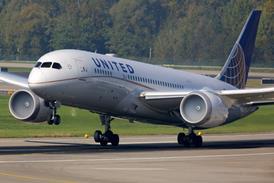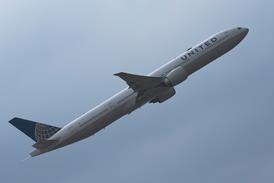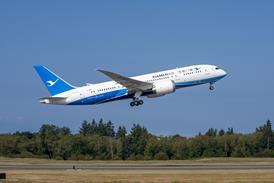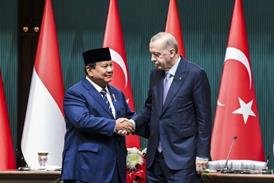Taiwanese investigators have found that a Boeing 757's unnecessarily fierce descent during a collision-avoidance manoeuvre injured 20 people on board the jet, four of them seriously.
Three passengers were left with broken bones and a fourth was knocked unconscious as the pilot put the Far Easten Air Transport aircraft into a dive which, at one point, exceeded 12,000ft/min. Ten other passengers and six flight attendants suffered light injuries and interior cabin fittings were damaged.
During the manoeuvre, a response to a 'descend' command from the traffic alert and collison avoidance system (TCAS), the aircraft was subjected to negative forces of up to 1.06g for about 4s, followed by positive 2.48g for 2s as the pilot arrested the descent and levelled.
Taiwan's Aviation Safety Council, in its inquiry into the 16 November 2006 incident, has concluded that the evasive action was "excessive" and that a properly-executed standard response to the TCAS alert would have sufficed.
The 757 had been approaching Jeju in Korea along airway B576 when an Inchon area controller instructed it to descend from FL390 to FL310.
As the jet neared FL340 the controller realised it could conflict with a Thai Airways International Boeing 777-300 cruising at FL340 in the opposite direction.
With the jets separated by 12.2nm (22.6km) horizontally, and just 51ft vertically, both aircrews received initial traffic advisories warning of one another's presence.
The controller, also aware of the potential threat, started instructing the 757 to halt its descent before he realised the aircraft had already passed below FL340, and decided to let it continue. The 757's crew, however, did not comprehend the mixed message and levelled the aircraft at FL338.
Thirteen seconds after the traffic advisory the TCAS ordered simultaneous collision-avoidance commands, telling the 757 pilots to descend and the 777 crew to climb.
"The [757's] flight crew did not complete the TCAS resolution advisory standard operation procedures and commenced an excessive high-rate descent," says the ASC inquiry. "The induced negative g-force resulted in the occupants' injury."
It states that maintaining a normal 1,500ft/min descent rate would have provided enough vertical clearance between the aircraft, and points out that the controller was also resolving the conflict in the horizontal plane by instructing the 777 to make a right turn. At their closest point of approach the two aircraft had 0.85nm lateral and 2,611ft vertical separation.
Although the 757's crew had illuminated the seat-belt sign a few minutes before the encounter, several passengers were still moving around the cabin either to reach the washrooms or purchase duty-free goods.
"Most of the injured passengers lost their protection because their seat-belts were not fastened while the 'fasten seat-belt' sign was still on," says the ASC.
Investigators have stressed that the original conflict arose partly from the use of non-standard phraseology and a failure, both by the 757 pilots and the controller, to follow proper TCAS procedures.
Although Taipei-based Far Eastern Air Transport started introducing improved TCAS and crew resource management training, the airline suspended operations in May after running into financial problems.
Source: Air Transport Intelligence news











































